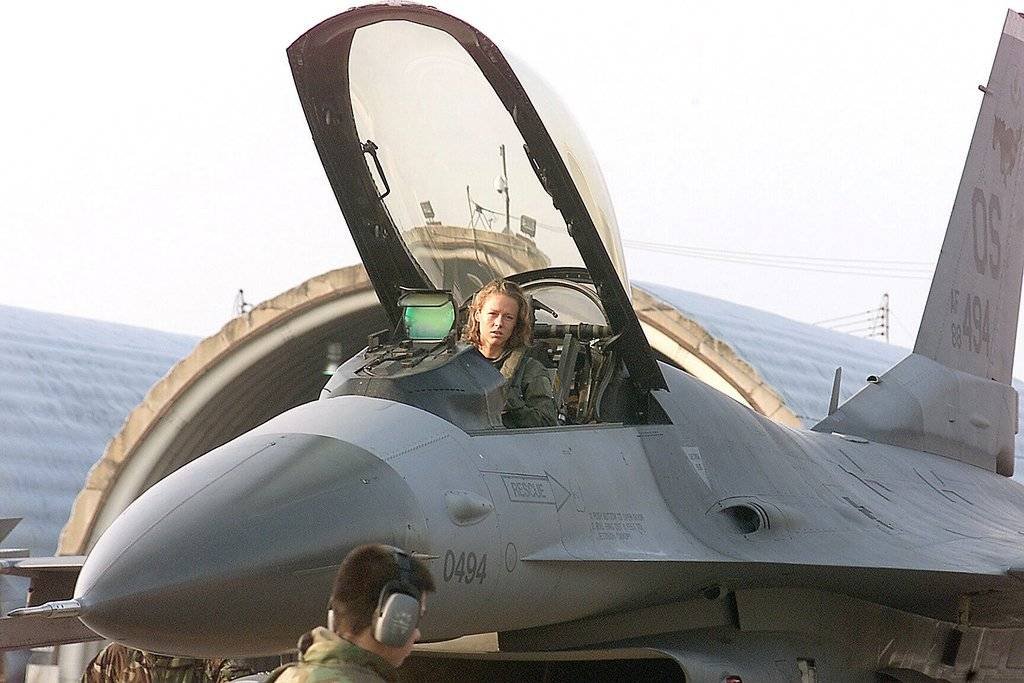On May 13, 2022, the United States Air Force (USAF) abolished the longstanding height stipulation for aspirants wishing to navigate fighter jets, aiming to beckon a broader array of candidates. This change comes amidst a palpable dearth of pilots within its ranks, suggesting that the elimination of such physical constraints might augment enlistment figures.
Previously, irrespective of gender, aspirants were required to stand no less than five feet four inches and no taller than six feet six inches, coupled with a sitting stature spanning 34 to 40 inches. These dimensions were dictated by the ergonomic demands of cockpit accommodations and the requisite accessibility to controls, historically tailored around the stature of an average American male—5 feet 9 inches for men and 5 feet 4 inches for women.

Despite the annulment of these strictures, potential pilots falling outside these measures can still seek entry through a waiver. This necessitates undergoing an anthropometric assessment at either Wright Patterson Air Force Base in Ohio or the Air Force Academy in Colorado, where a candidate’s physique is meticulously evaluated.
Major General Craig Wills of the 19th Air Force extolled the waiver process, stating, “We have a robust system to assess and incorporate those who do not meet our standard measurements,” and highlighted, “Those taller than 5 feet, 2 inches generally have a greater than 95% likelihood of qualifying for pilot duties. Over the past five years, individuals as short as 4 feet, 11 inches have successfully obtained waivers.”
In its quest for a more inclusive recruitment pool, the USAF is particularly keen on integrating minorities into its aviation ranks. As early as the spring of 2018, concerns over pilot scarcity were voiced during a summit at the Air & Space Forces Association headquarters in Arlington, Virginia, where strategies to entice more minorities were deliberated. Historically, the composition of USAF pilots has not mirrored the diversity seen within its enlisted members.
Lieutenant Colonel Jessica Ruttenber, an Air Force mobility planner, remarked on the psychological barriers that deter women from applying, despite qualifying for waivers, “Research indicates that women often doubt their complete qualifications for a role, hence are less inclined to apply. Amending the height criteria will permit a wider and more varied group of applicants to pursue careers within the confines of existing aircraft parameters.”
With a dwindling pool of young individuals eligible for military training, the need to allure more women and minorities becomes even more critical. Despite the abrogation of height restrictions in 2020, the USAF continues to vie with commercial airlines for candidates. As of August 25, 2023, over 900 applicants awaited commencement of their pilot training, with some facing up to nine months before starting, during which many engage in other duties such as office work or aircraft marshaling.
Since its inaugural flight on April 10, 1959, the Northrop T-38 Talon has been a cornerstone in training USAF pilots. Even though production ceased in 1972, the aircraft remains a pivotal resource in pilot training. Delays in modernizing its fleet with the Boeing–Saab T-7 Red Hawk supersonic advanced jet trainer have necessitated the continued use of the T-38, with the new model slated for introduction in 2027.
In conclusion, the USAF’s strategic removal of the height requirement not only aims to broaden its recruitment base in response to an acute pilot shortage but also underscores a commitment to fostering diversity and inclusion within its ranks. This policy revision is poised to reshape the landscape of USAF pilot demographics profoundly.
The initiative to dissolve traditional height restrictions reflects a broader, systemic shift towards inclusivity within the USAF, marking a progressive step towards dismantling barriers that might deter a diverse array of candidates from pursuing a career in aviation. Air Force Chief of Staff General David Goldfein, addressing the ongoing efforts to diversify the pilot ranks, emphasized the necessity of proactive outreach, particularly aimed at minority youth. He proposed that initiatives should not only start early but also engage deeply with community activities to cultivate interest and awareness from a young age.
“This is a bold move towards resolving the pilot shortage crisis we face,” General Goldfein stated during a briefing. “It’s imperative that leadership takes charge with adequate authority and resources to spearhead these initiatives effectively. The outreach must start from the grade-school level and be deeply integrated within the community.”
The challenge of filling the pilot ranks is compounded by stiff competition from the commercial sector, where pilots often find more lucrative opportunities. The USAF’s strategy to counteract this involves not only making the training more accessible but also ensuring potential recruits see a clear and feasible pathway into aviation careers, irrespective of their physical attributes.
The persistence of the T-38 Talon as a training aircraft underscores the USAF’s commitment to continuity but also highlights the urgent need for modernization to keep pace with evolving aerospace technologies and training methodologies. The transition to the Boeing–Saab T-7 Red Hawk, despite its delays, is anticipated to significantly enhance the training experience with its advanced capabilities, mirroring the technological advancements seen across the military spectrum.

In addition to hardware updates, the USAF is focusing on software—developing programs and policies that are more reflective of the nation’s diversity. This includes revising recruitment standards and protocols to not only increase the quantity of pilots but also to enrich the quality of the corps through a broader representation of the American populace.
Ultimately, the removal of the height requirement is not just about increasing numbers; it’s about affirming the USAF’s commitment to equality and opportunity. It is an acknowledgment that capability and potential cannot be measured solely by physical dimensions but rather by skill, determination, and the broader perspective that diversity brings to the cockpit and beyond.
By fostering an environment where anyone, regardless of height, can aspire to soar in its ranks, the USAF is setting a precedent for inclusivity that could have ripple effects throughout the military and potentially influence other sectors to reevaluate and possibly dismantle similar outdated standards that limit potential based on physical characteristics.
More on Military Aviation
The Boeing B-52 Stratofortress: Unveiling Its Secrets
F-22 Raptor vs Sukhoi-57: A Stealth Capabilities Showdown

